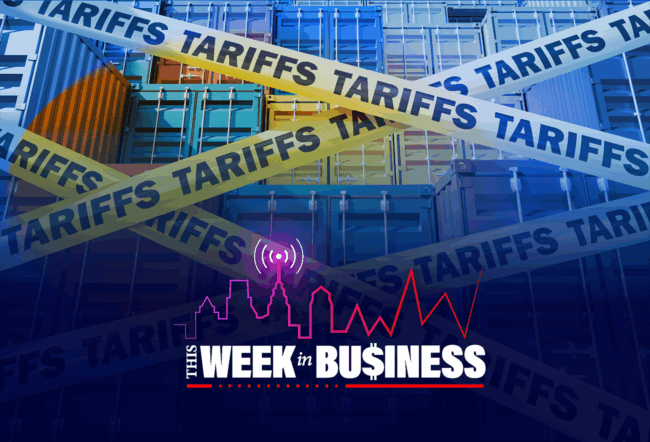The steep increase in interest rates over the past year has obviously lifted housing mortgage finance rates as well. For most people who bought their homes when interest rates were at historically low levels over the last 15 years, refinancing their mortgages at today’s higher rates is a losing proposition. Those homeowners are caught in a so-called “mortgage lock-in,” according to a new paper titled “Mortgage Lock-In, Mobility, and Labor Reallocation” by University of Illinois at Urbana-Champaign finance professor Julia Fonseca and Wharton finance professor Lu Liu.
Typically in the U.S., a homeowner with a mortgage can move to a different home only after paying off the existing mortgage and refinancing their home with a new mortgage. But homeowners who find themselves in a mortgage lock-in cannot move to a different location unless they buy a cheaper home or earn more, in addition to covering the costs of moving and refinancing. In such conditions, Liu said “the housing market is gridlocked,” where homeowners have a “strong incentive to stay put” in their current homes.
The paper’s authors build their case around the metric of the mortgage rate differential (or “mortgage rate delta”) which is the difference between the mortgage rate locked in at purchase and the current market rate. Their study covered the period between 2010 and 2018, with about four million observations (or households) of data on consumer credit records. The average mortgage loan balance was $205,480, the average remaining loan term was 21 years, and the average mortgage rate was 5.1%. The moving rate was measured as a change in a homeowner’s primary residence that has been reported to a credit bureau or bank.
How Rising Mortgage Rates Impact Moving
The paper has three main sets of findings. First, it studied interest rate increases over the past few years and projected rates and predicted a worsening mortgage rate differential (the gap between the rate at which a homeowner financed a mortgage and the current market rate). It estimated the average mortgage rate delta would decline by 1.9% since 2018.
“As interest rates go up, the [mortgage rate] differential becomes more negative, meaning people are getting more locked-in.”— Lu Liu
Liu explained the impact of that declining mortgage rate differentials on moving rates: A one percentage point decline in mortgage rate deltas reduces moving rates by 0.68 percentage points, or 9%. “As interest rates go up, the [mortgage rate] differential becomes more negative, meaning people are getting more locked in,” she said. Considering rate increases over the last few years and projected rates, this can explain a decline in moving by around 25% between 2018 and the next 10 years, she added.
Lock-in Can Happen Even When Mortgage Rates Don’t Rise
The second main finding is the discovery of a non-linear effect between mortgage rate differentials and moving. If households didn’t have a mortgage, moving would only be driven by moving considerations such as a better-paid job opportunity. Once households have a mortgage, they need to remortgage and hence pay the mortgage rate differential as well as a remortgaging cost to move. But once the mortgage differential is sufficiently positive, and it is higher than the cost of refinancing, “the probability of moving no longer depends on the mortgage rate delta,” Liu said.
One surprising finding of their study, Liu continued, was that mortgage lock-in occurs before the mortgage delta turns zero and heads into negative territory, meaning even if rates don’t rise. “That is because refinancing is costly; if you want to move, you have to pay that cost,” she explained. “You’re only going to move once that net difference is big enough.”
The third finding is that mortgage lock-in discourages labor mobility. “This is important from a welfare perspective and from a real economy perspective,” Liu said. The study used a “moving shock” like higher-wage employment opportunities as a proxy to gauge the effects on labor mobility.
“A shock to wage increases within the broader metropolitan area where you live means that you have better employment opportunities and so you should move,” Liu said. The study found that people who find higher-wage jobs do move, but those with a high delta are much more sensitive to these moving shocks than those with a low delta.
“You would move if you had a fantastic job opportunity that pays you 50% more than your current job, and that’s enough to cover the cost of a more expensive mortgage.”— Lu Liu
“You would move if you had a fantastic job opportunity that pays you 50% more than your current job, and that’s enough to cover the cost of a more expensive mortgage,” Liu said. “That would be an example where the moving shock was large enough to overcome the cost of mortgage lock-in.”
Takeaways for Policymakers
According to Liu, their paper offered some takeaways for policymakers. She pointed out that when homeowners in the U.S. want to move, they have to settle their existing mortgage and take out a fresh mortgage for their new home. In that, they have less flexibility in moving home than those in the U.K. or Canada, which allow portability (taking your mortgage to a new house) or assumability of mortgages (taking over the mortgage on an existing house), respectively. (Some mortgages in the U.S. are assumable, such as those insured by the Federal Housing Administration for low-income people, she clarified.)
“When policymakers raise interest rates, we need to think about mortgage market policies that alleviate lock-in, otherwise there will be knock-on effects on mobility and labor reallocation,” Liu continued. It would be helpful if homeowners can keep their existing mortgages and take it to their new houses; policymakers should evaluate these policies with mortgage lenders, she added.



